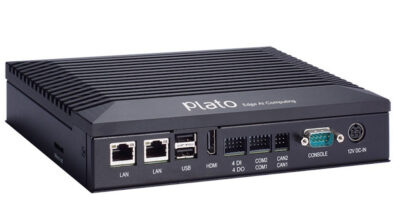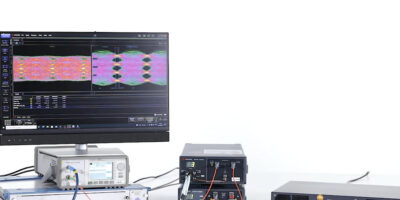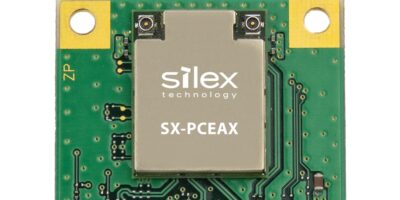Axiomtek’s RSC100, ARM-based Edge embedded PC featuring the Hailo-8 AI accelerator is now available from industrial computing systems specialist, Impulse Embedded. The streamlined processing unit for AI applications can offer up to 26 T operations per second and is housed in a cost-effective, power-efficient unit, said the company.
The edge system combined with Hailo’s Hailo-8 processor, can be used in a range of applications, including public safety, smart factory, agriculture and intelligent transportation.
The system chassis is made up of aluminium and heavy duty steel with an IP40 rating and supports a wide operating temperature of -20 to +70 degrees C, making it suitable for use in harsh, industrial environments where the temperatures can vary throughout operation. The RSC100 has dual Gigabit Ethernet ports, an M.2 3052 B-key slot which can be used to install a 5G module and two full-size miniPCIe slots. The RSC100 also has seven SMA antenna breakout holes for wireless comms requirements of a variety of applications.
The eight-core ARM processor is backed up with 4Gbyte of LPDDR4 system memory and has 16Gbyte of eMMC storage onboard as standard as well as an M.2 2280 M-key SSD slot with PCIe x4 NVMe support and a MicroSD card slot for additional storage.
Further I/O includes a built-in HDMI 2.0 port with 4K resolution support, two serial ports supporting RS-232/422/485, two CANbus ports, two USB2.0 ports and eight channels of digital I/O, (four, direct input, four direct output). For embedded operating system support, Yocto Linux 3.0 is supplied.
The I/O, software and connectivity, combined with an AI-focused microprocessor that uses just 2.5W whilst achieving 26TOPs of INT-8 performance, means the RSC100 can process complex deep learning neural networks at the edge in smart embedded applications, explained Impulse Embedded.
As with all of its embedded computing range, Impulse can configure the RSC100 to customer’s exact specifications in its UK-based engineering facility. It offers a choice of storage, peripheral cards, operating system, and neural network.
The company has embedded systems capabilities and a team of in-house engineers and specialists to create revision-controlled systems which can reduce project costs and development time.







